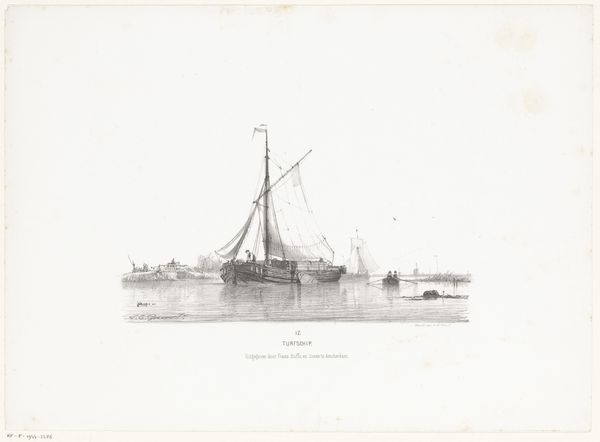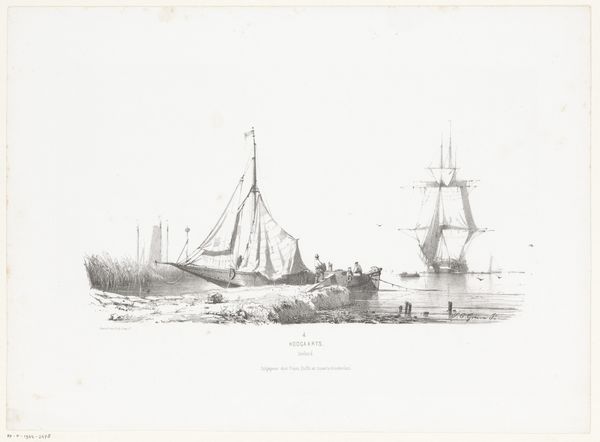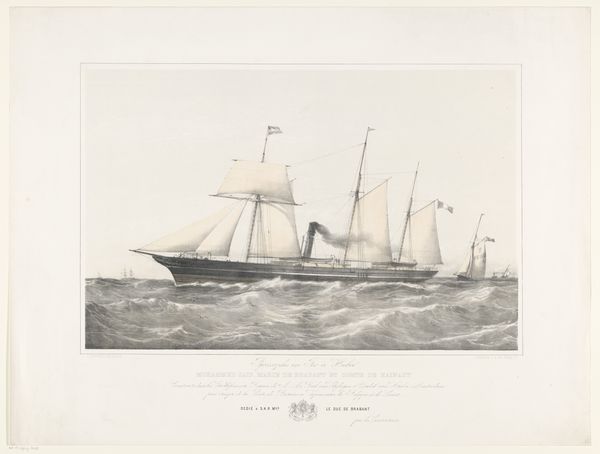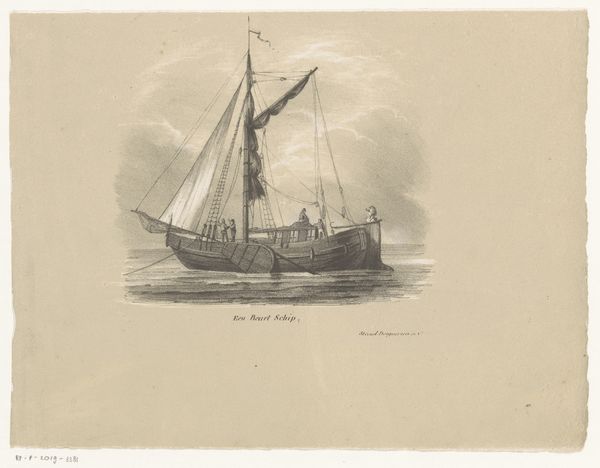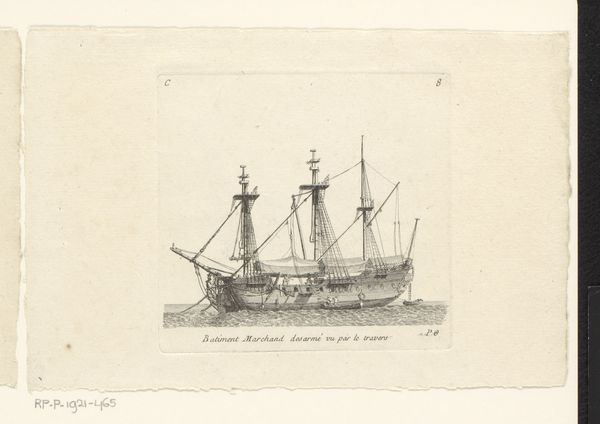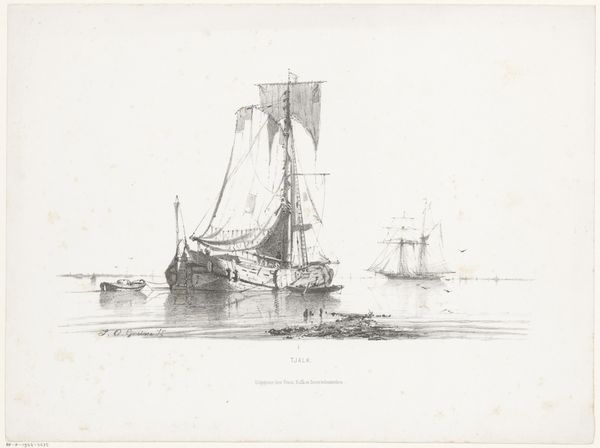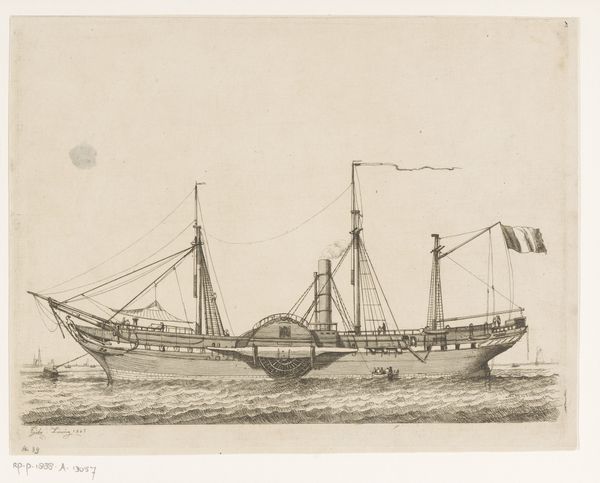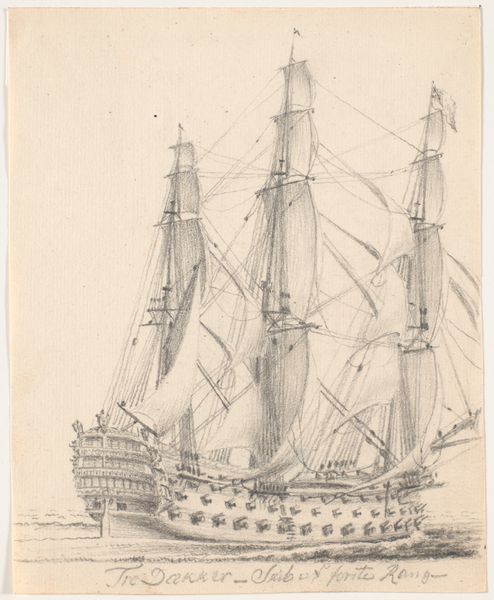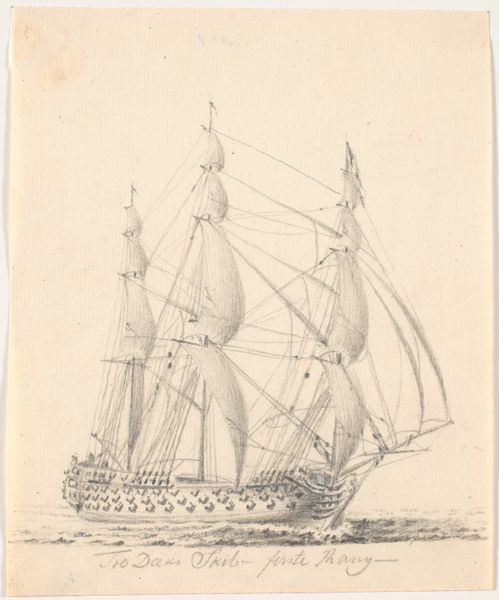
print, etching, graphite
# print
#
etching
#
pencil sketch
#
old engraving style
#
landscape
#
pen-ink sketch
#
graphite
#
realism
Dimensions: height 273 mm, width 370 mm
Copyright: Rijks Museum: Open Domain
Curator: I’m immediately struck by how much detail Johan Conrad Greive managed to pack into this etching from around 1860, "Kof of Smak." There’s a whole miniature world unfolding here. Editor: Yes, it has a haunting sort of stillness. Looking closely at the reproduction of "Kof of Smak," what grabs me is the emphasis on craft—the etched lines creating texture not just on the sails, but really capturing how weather would wear away wood of these sailing vessels. You can almost feel the salt spray! Curator: Absolutely. Greive really captured the specific wear and tear on these working ships. I love how the reflections of the vessels ripple across the water, tying the entire composition together. It gives it a poetic feel, like a faded memory. Editor: The production values here raise many questions. What class or trade were these workers coming from, how readily available were the materials, how were their forms of labor influencing modes of circulation or trade. It offers an unspoken social history through technique. Curator: That’s such a good point about the intersection of artistry and labor. You know, there's almost something dreamlike in its precision – it feels like something remembered or imagined, rather than rigidly observed. Editor: Precisely. Considering that printing images was also labor, and remembering how images like this circulated, we have to ask to what extent printmaking and trade made each other viable enterprises! The network of production seems more and more vast the more I look at the networks and knot-work of lines. Curator: The medium also subtly emphasizes this dreamlike atmosphere and allows for a really intriguing dance between the detailed textures of the ships and the blurred-out, almost nonexistent horizon. It creates a fascinating tension, a place somewhere between being solid and dissolving into the mists. Editor: What feels especially evocative for me is this kind of pre-photographic documentation of how our built environment meets our world’s ecology. Images like this allowed communities to know each other. How powerful it is to picture these communities coming together. Curator: That’s a gorgeous sentiment to land on—seeing communities coalesce through image sharing in earlier forms of print culture! It definitely shifts my thinking to how artists can imagine alternate futures. Editor: Mine as well; after all, a future is just a dream folks try to collectively render, materializing by means of craft.
Comments
No comments
Be the first to comment and join the conversation on the ultimate creative platform.
